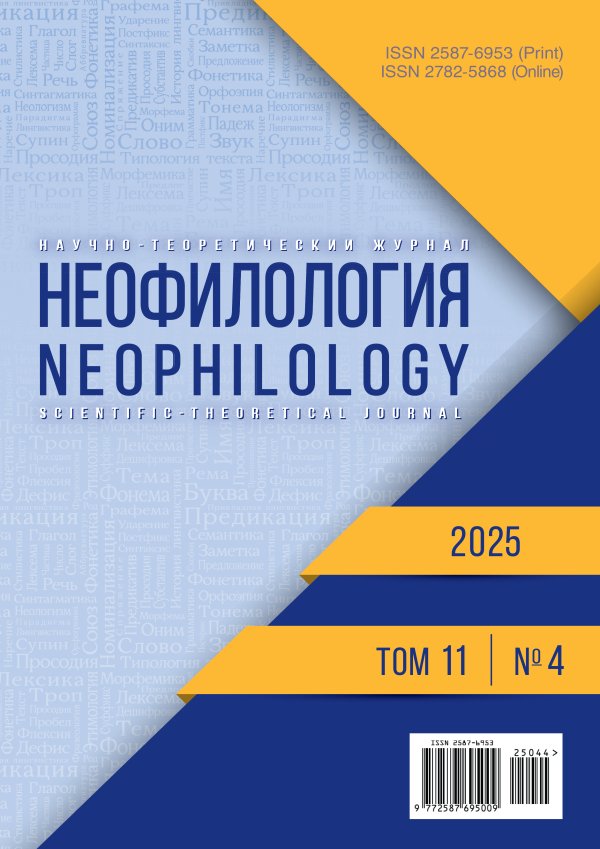Противостояние фейкам на китайских социальных платформах: коммуникационные особенности Weibo и Wechat
- Авторы: Музыкант В.Л.1, Янь Я.1
-
Учреждения:
- ФГАОУ ВО «Российский университет дружбы народов им. Патриса Лумумбы»
- Выпуск: Том 11, № 2 (2025)
- Страницы: 400-417
- Раздел: СОВРЕМЕННЫЙ МЕДИАТЕКСТ И ИНТЕРНЕТ-ДИСКУРС
- URL: https://journal-vniispk.ru/2587-6953/article/view/297442
- DOI: https://doi.org/10.20310/2587-6953-2025-11-2-400-417
- ID: 297442
Цитировать
Полный текст
Аннотация
ВВЕДЕНИЕ. Рассмотрены особенности распространения фейковых новостей на китайских социальных платформах Weibo и WeChat. Научная проблема заключается в выявлении различий в механизмах вирусного и скрытого распространения дезинформации, а цель исследования – проведение сравнительного анализа применяемых механизмов дезинформации и оценка превентивных мер по борьбе с фейками.
МАТЕРИАЛЫ И МЕТОДЫ. В качестве материала исследования использованы 2000 публичных постов с примерами фейковых новостей из Weibo и WeChat. Применены методы качественного контент-анализа и сравнительного анализа: систематическое наблюдение способов распространения фейковых новостей, анализ структуры социальных связей («слабые» и «сильные» связи) целевых аудиторий и исследование пользовательского поведения.
РЕЗУЛЬТАТЫ ИССЛЕДОВАНИЯ. Доказано, что Weibo, как открытая сеть со «слабыми связями», обеспечивает молниеносное вирусное распространение фейков через массовые репосты и хэштеги. В то же время WeChat распространяет дезинформацию через «сильные» доверительные связи внутри закрытых групп и личных чатов, делая новости более скрытыми и труднопроверяемыми. Инструменты борьбы с фейками, используемые медиаплатформами, представлены публичными аккаунтами опровержения, алгоритмическим регулированием, внедрением ИИ и блокчейна, что имеет разную степень эффективности в зависимости от типа сети.
ЗАКЛЮЧЕНИЕ. Интерпретация результатов подчёркивает необходимость междисциплинарного сотрудничества и расширения глобальных сравнительных исследований. Для повышения устойчивости общества к фейкам требуются комплексные стратегии управления информационной средой, развитие цифровой гуманитаристики, повышение прозрачности алгоритмов модерации и создание международных механизмов оперативного опровержения дезинформации.
Ключевые слова
Об авторах
В. Л. Музыкант
ФГАОУ ВО «Российский университет дружбы народов им. Патриса Лумумбы»
Email: muzykant-vl@rudn.ru
ORCID iD: 0000-0001-9422-351X
доктор социологических наук, профессор кафедры массовых коммуникаций
Россия, 117198, Российская Федерация, г. Москва, ул. Миклухо-Маклая, 6Яогуан Янь
ФГАОУ ВО «Российский университет дружбы народов им. Патриса Лумумбы»
Автор, ответственный за переписку.
Email: yanyg1997@gmail.com
ORCID iD: 0009-0008-2938-602X
аспирант, кафедра массовых коммуникаций
Россия, 117198, Российская Федерация, г. Москва, ул. Миклухо-Маклая, 6Список литературы
- Munadhil A.M., Muzykant V.L. Fake news on Covid-19 in Indonesia // Pandemic Communication and Resi-lience / D.M. Berube (ed.). Cham: Springer, 2021. P. 363-378. https://doi.org/10.1007/978-3-030-77344-1_22
- 党留新. 社交网络中的假新闻检测系统 [D]. 成都:电子科技大学, 2021. (Дан Лю Синь. Система обна-ружения фейковых новостей в социальных сетях. Чэнду: Университет электронной науки и технологий Китая, 2021.)
- Muzykant V.L., Hossain B. Shifting Narratives: Russia’s Image in South Asian Media in 2022–2024 (by the Ex-ample of the Mass Media in People’s Republic of Bangladesh) // Вопросы теории и практики журналистики. 2024. Т. 13. № 4. С. 710-722. https://doi.org/10.17150/2308-6203.2024.13(4).710-722, https://elibrary.ru/sxklif
- Манойло А.В., Попадюк А.Э. Зарубежные научные подходы к исследованию «фейковых новостей» в ми-ровой политике // Россия и современный мир. 2020. № 2 (107). С. 285-300. https://doi.org/10.31249/rsm/2020.02.17, https://elibrary.ru/raokwi
- Guo L., Zhang Y. Information flow within and across online media platforms: An agenda-setting analysis of rumor diffusion on news websites, Weibo, and WeChat in China // Journalism Studies. 2020. Vol. 21. № 15. Р. 2176-2195. https://doi.org/10.1080/1461670X.2020.1827012, https://elibrary.ru/vizezp
- Zhou X.Y., Zafarani R. A survey of fake news: Fundamental theories, detection methods, and opportunities // ACM Computing Surveys. 2020. Vol. 53. № 5. Р. 1-40.
- Allcott H., Gentzkow M. Social media and fake news in the 2016 election // Journal of Economic Perspectives. 2017. Vol. 31. № 2. Р. 211-236. https://doi.org/10.1257/jep.31.2.211, https://elibrary.ru/yfkydz
- Lazer D.M.J., Baum M.A., Benkler Y. et al. The science of fake news // Science. 2018. Vol. 359. № 6380. Р. 1094-1096. https://doi.org/10.1126/science.aao2998
- Shu K., Sliva A., Wang S. et al. Fake news detection on social media: A data mining perspective // ACM SIGKDD Explorations Newsletter. 2017. Vol. 19. № 1. Р. 22-36. https://doi.org/10.1145/3137597.3137600
- Vosoughi S., Roy D., Aral S. The spread of true and false news online // Science. 2018. Vol. 359. № 6380. Р. 1146-1151. https://doi.org/10.1126/science.aap9559
- Chen Y., Conroy N.J., Rubin V.L. Misleading online content: Recognizing clickbait as “false news” // Proceedings of the 2015 ACM Workshop on Multimodal Deception Detection. 2015. P. 15-19.
- Tandoc J.E., Lim Z.W., Ling R. Defining “fake news”: A typology of scholarly definitions // Digital Journalism. 2018. Vol. 6. № 2. Р. 137-153.
- Kshetri N., Voas J. The economics of “fake news” // IT Professional. 2017. Vol. 19. № 6. Р. 8-12. https://doi.org/10.1109/MITP.2017.4241459, https://elibrary.ru/yfiyfv
- Guess A., Lyons B. Misinformation, disinformation, and online propaganda // Social Media and Democracy: The State of the Field, Prospects for Reform / N. Persily, J. Tucker (eds.). Cambridge: Cambridge University Press, 2020. P. 10-33. https://doi.org/10.1017/9781108890960.003
- Asudeh A., Jagadish H. V., Wu Y. et al. On detecting cherrypicked trendlines // Proceedings of the VLDB En-dowment. 2020. Vol. 13. № 6. Р. 939-952. https://doi.org/10.14778/3380750.3380762, https://elibrary.ru/xwxiis
- Chen Y., Conroy N.J., Rubin V.L. Deception detection for news: Three types of fakes // Proceedings of the 78th Association for Information Science and Technology. 2015. P. 1-4.
- Zubiaga A., Aker A., Bontcheva K. et al. Detection and resolution of rumours in social media: A survey // ACM Computing Surveys. 2018. Vol. 51. № 2. Р. 1-36. https://doi.org/10.1145/3161603
- 王剑, 王玉翠, 黄梦杰. 社交网络中的虚假信息:定义、检测及控制 [J]. 计算机科学, 2021, 48(8):263-277. (Ван Цзянь, Ван Юцуй, Хуан Мэнцзе. Ложная информация в социальных сетях: определение, обна-ружение и контроль // Компьютерные науки. 2021. Т. 48. № 8. С. 263-277.)
- Dong L., Nor N.H.M., Bai G.K., Adzmi A.M., Rais S.S.A. Fake news sharing among Weibo users in China // Jurnal Komunikasi: Malaysian Journal of Communication. 2023. Vol. 39. № 4. Р. 284-305 https://doi.org/10.17576/jkmjc-2023-3904-15, https://elibrary.ru/bbfmgh
- Wang D., Qian Y. Echo chamber effect in rumor rebuttal discussions about COVID-19 in China: Social media content and network analysis study // Journal of Medical Internet Research. 2021. Vol. 23. № 11. Р. e27009. https://doi.org/10.2196/27009, https://elibrary.ru/hrynpz
- 袁帆, 严三九. 从“点式”到“链式”:区块链技术对新闻透明的再推进 [J]. 中国编辑, 2019, (03):14-19. (Юань Фань, Ян Саньцзюнь. От «точечного типа» к «цепному типу»: блокчейн-технология вновь продвигает прозрачность новостей // Китайский редактор. 2019. № 3. С. 14-19.)
- 陈旭. 官方辟谣平台发展对策研究 [J]. 辽宁师专学报(社会科学版), 2022, (04):137-140. (Чэнь Сюй. Исследование мер по развитию официальных платформ опровержения слухов // Вестник Ляонинского педагогического колледжа (социальные науки). 2022. № 4. С. 137-140.)
Дополнительные файлы











